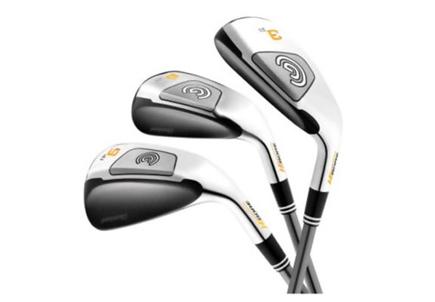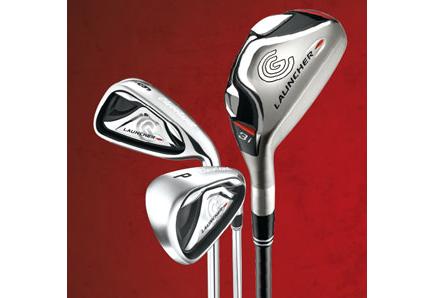Nc9
Special welding process fuses Titanium with stainless steel to create a durable, metallurgical bond to deliver higher ball speeds and a softer feel at impact. Static weight distribution screws on each clubhead for progressive performance combinations from long to short irons. Clubs fitted with lightweight Fujikura 65i graphite shafts with soft-tip R2 and R flexes for higher ball launch. S flex offers lower trajectory for faster swings. Available in 4-PW.

The launch in February of these Wilson Staff Nc9 irons didn't receive the attention it perhaps deserved. Maybe it was the £600 price-tag that suddenly seemed luxurious as the credit crunch bit harder than anyone expected.
Or maybe it was simply that the Wilson Staff brand sees the Nc9 very much as a niche product, not one that is going to sell by the millions and pay back some of the investment spent on retaining the services of its high-profile Irishman, Padraig Harrington.
If either of the above are relevant, it's a shame, because the Wilson Staff Nc9s are a stunning set of irons that are as innovative and cutting edge as anything the brand has ever produced.
The most prominent aspect is what it calls double-face technology - the fusing of stainless steel and titanium, a process that uses more than one million pounds per square inch of pressure to produce a new material ideal for golf clubs. Titanium in the face is extremely thin, producing a high COR (trampoline effect) within the regulations and high ball speed off the face.
Stainless steel behind the face gives the clubs a noticeable soft feel at impact. This multi-piece construction also allows weight to be better distributed around the clubhead and help increase the MOI (resistance to twisting). With such large sweetspots, these irons are ridiculously easy to hit.
As innovative as all this may be, it's not a technology that is immediately apparent to the prospective buyer. What you really notice are the four weight screws on the back of each clubhead - not ground-breaking but more than purely cosmetic or a way of altering the overall weight.
With Wilson Staff Nc9 irons, much research has gone into optimising the process, with different materials used in different combinations and positions throughout the set to progressively change the performance between long, mid and short irons.
For example, the long irons need a high MOI (resistance to twisting) so four heavier tungsten inserts are used. In the mid-irons a compromise between forgiveness and workability demands two outer tungsten and two inner, light aluminium plugs. In the short irons the MOI is reduced to allow greater manoeuvrability, so only aluminium is used.
Of course, all this technology counts for nothing if the clubs don't perform but thankfully the combinations work so well you hardly notice. Playing with these irons, I didn't hit a 4-iron and marvel at how stable it felt, or stand back amazed at the workability of the 9-iron. I tried to play my natural game, then considered how refreshing it was to hit so many good shots with almost every club in the set.
A low centre of gravity in the heads and a lightweight Fujikura graphite shafts delivering a kick in the tip made it so easy to get the ball airborne and the overriding feeling throughout is one of solidity.
Summary
The state of the economy and golfers' finances currently perhaps won't reflect just how good this set of irons is, in high sales figures. But my opinion is that Wilson Staff's innovative approach really does offer performance benefits.

